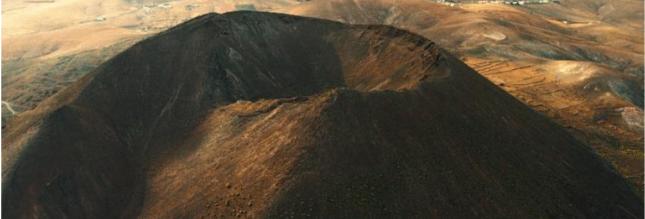We use cookies to make your experience better. To comply with the new e-Privacy directive, we need to ask for your consent to set the cookies. Learn more.
ALOE VERA
Aloe vera belongs to the kingdom Plantae; division: Magnoliophyta; class: Liliopsida; order: Liliales; family: Liliaceaes; genus: Aloe; specie: Aloe Barbadenses (Miller); common name: Aloe vera. This family also includes garlic, onions and asparagus, all of which are known to have certain medicinal properties.
The plant Aloe vera or Aloe Barbadenses Miller is the most widely used variety worldwide for curative medicine, with elongated, fleshy, water-rich leaves, reaching a height of 50 to 70 cm; with stems 30 to 40 cm long, with a spiny, serrated edge; the flowers are tubular, hanging, yellow. This plant is xerophytic, i.e. it adapts to living in areas with little water availability and is characterised by its water-storing tissues.
The most commonly used are the leaves, each of which is composed of three layers: an inner layer which is a transparent gel containing 99% water and the rest is made up of
glucomannans, amino acids, lipids, sterols and vitamins; the middle layer or latex which is the bitter yellow sap containing anthraquinones and glycosides and the thick outer layer called the
cortex, which has the function of protection and synthesis of carbohydrates and proteins. Inside the cortex the vascular bundles are responsible for the transport of substances such as
water (xylem) and starch (phloem).
ALOE VERA HONEY
Aloe vera honey is a unique honey in the world because of its purity with 95% obtained from a single flower, something that only happens in desert areas where our black canary bee is only surrounded by the beautiful aloe vera flower fields of Fuerteventura, only for two months of the year. The honey obtained has proven to be extremely effective in the treatment of skin conditions such as burns, eczema, acne, fungal infections, bacterial infections, etc. In addition, it efficiently moisturises the skin and cures infections. One of the most important anti-bacterial components that can be found in aloe vera flower honey is methylglyoxal (MG).
Aloe vera flower honey possesses the uncanny ability to repair damaged skin and regenerate its growth, as bees extract the best of an age-old medicinal plan.
ZEOLITE
Zeolite is a mineral of volcanic origin extracted from the interior of the Gairia volcano, which provides great benefits for our organism. In countries such as China, Japan and Russia it has been used for more than eight centuries as part of natural medicine.

Zeolites are micro-porous minerals that are formed from volcanic ashes, they act as catalysts, improving the absorption of the skin, so that the rest of the natural ingredients that accompany the Cosmetic formulas penetrate more easily into our skin allowing them to deploy all their benefits. However, the greatest achievement of these products is the retention of water in the collagen. Thus, scientific studies have revealed that after only three days of using the main product of the line, collagen destruction was reduced by 20%. After three weeks of use, collagen synthesis (the loss of which is responsible for wrinkles and loss of skin firmness) is stimulated and skin density and elasticity are increased.
APITOXIN
Black bee venom, or apitoxin, is the new natural Botox that erases wrinkles and fine lines, has anti-inflammatory and repairing power for the skin. The bee venom itself increases blood circulation and tightens the skin by plumping and smoothing fine lines and wrinkles and the honey with bee venom causes blood to pool in the area and stimulates the production of natural collagen and elastin strengthening the body's tissues, and helping the skin to stay taut and bounce back into shape after being pressed or pinched.
BEESWAX
Beeswax is made up of 284 different compounds. It is based on saturated and unsaturated monoesters, saturated and unsaturated hydrocarbons and hydroxypolyesters. It has anti- allergic, anti-inflammatory, anti-bacterial and antioxidant benefits.
ALOE VERA FLOWER PROPOLIS
Propolis or propolis is a waxy resin with a viscous consistency that bees obtain from resinous substances from different plant sources - buds or shoots of trees, sap exudates, flowers, etc. - and use to reinforce structural stability. - and which they use to reinforce the structural stability of the hive, protect it, insulate it and prevent parasites and diseases. A hive produces between 80 and 400 grams of propolis per year.
Although we define it as waxy resin, it is rather a resinous mixture of complex composition in which we find, approx:
- 50 % resins and balsams, containing flavonoids and phenolic acids or their esters;
- 7.5-35 % waxes;
- 10 % essential oils and volatile aromatics;
- 5 % pollen; and
- 4.4-19.5 % impurities.
POLLEN
Bee pollen is the dust that bees collect from flowers and carry on their legs back to the hive to feed the colony. This dust is made up of granules containing the gametes or male reproductive cells of the plants. It contains 25% protein, is low in fat and sodium. It is a source of folic acid, riboflavin, thiamine, niacin, pridoxine, which are all B vitamins. It also provides vitamin D, E, K, A, inositol and choline. Minerals include phosphorus, calcium, potassium, iodine, zinc, copper, magnesium and selenium.
ROYAL JELLY
Royal jelly is the product of the hypopharyngeal glands of young black worker bees, with an ivory-white colour, creamy/gelatinous consistency, pungent odour and sour taste.
The main component of royal jelly is water, approximately 70%, with 10% proteins and sugars, and 6% ethereal extract represented mostly by 10-hydroxy-2-decenoic fatty acid, enzymes such as glucoxide and phosphatase, minerals K, Na, Mg, Ca, Zn, Fe, Cu, Mn) and vitamins (folic acid, pantothenic acid, biotin, niacin, riboflavin, thiamine), inositol and acetylcholine. This bee product is traditionally recognised for its regenerative activity. It has been used as a metabolism stimulant in anti-ageing therapies.

